How to Fit Bluetooth-integrated Hearing Aids to Maximize Patient Satisfaction
Catherine Jons, Carol Meyers
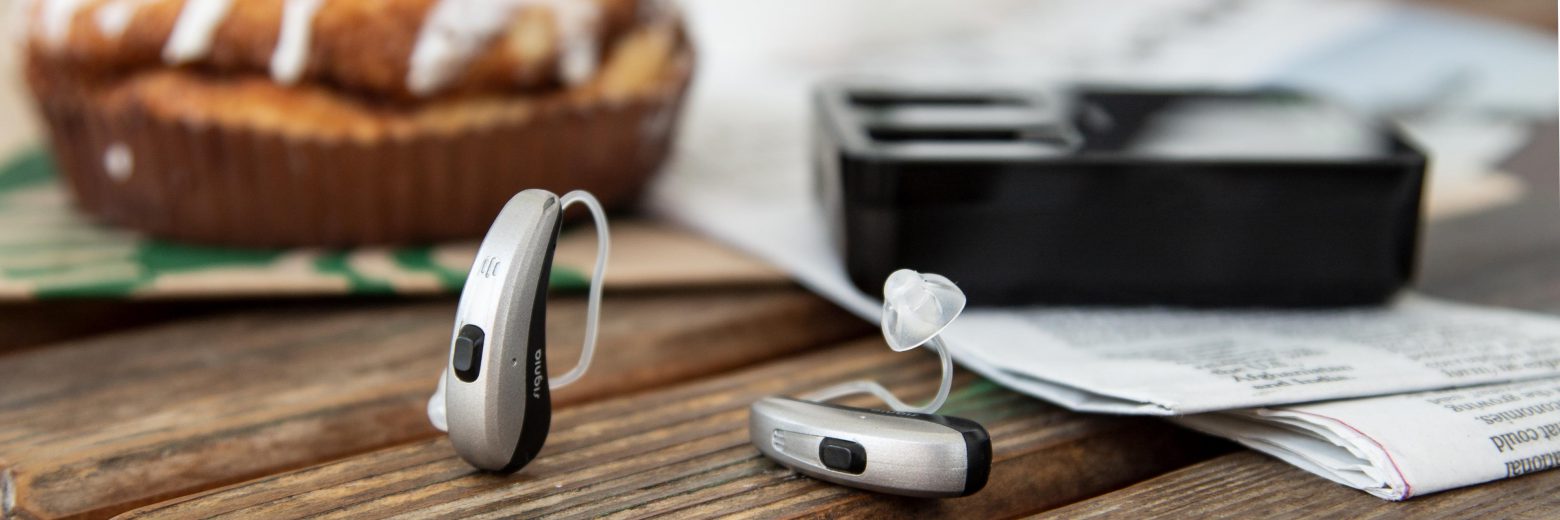
Fitting Bluetooth-integrated hearing aids is rapidly becoming the industry norm. Patients not only want the best audiological performance for improving speech understanding in noise while simultaneously reducing listening effort, but they also want technology that provides versatility and ease-of-use with their smartphones and tablets.
Simply providing Bluetooth technology, however, does not automatically equate with a successful fitting. It’s incumbent on the hearing care professional (HCP) to ensure the patient understands the benefits and limitations of Bluetooth with respect to smartphone placement and changing environmental conditions while streaming. Integrating Bluetooth technology into hearing aids is still an evolving technology from a patient usability and experience perspective. Assessing the patient’s streaming experience in an office with the smartphone placed on the table does not adequately evaluate real-world use scenarios where smartphone placement is typically in a pocket or bag. Research has shown that the location of the phone does make a difference, and that performance may vary from inside a building compared to being outside (Froehlich, 2019). Most importantly, research also has shown that there can be large differences in the quality among manufacturers. Confirming the patient has good usability at the initial fitting, not only is good clinical practice, but also promotes patient confidence and repeat business. The following workflow is recommended when fitting Bluetooth-integrated hearing aids to maximize patient satisfaction with varied smartphone placements and real-world listening environments. The protocol is suitable for use with all manufacturer’s Bluetooth products.
* Note – Hearing aids can be paired directly to the smartphone without downloading the app
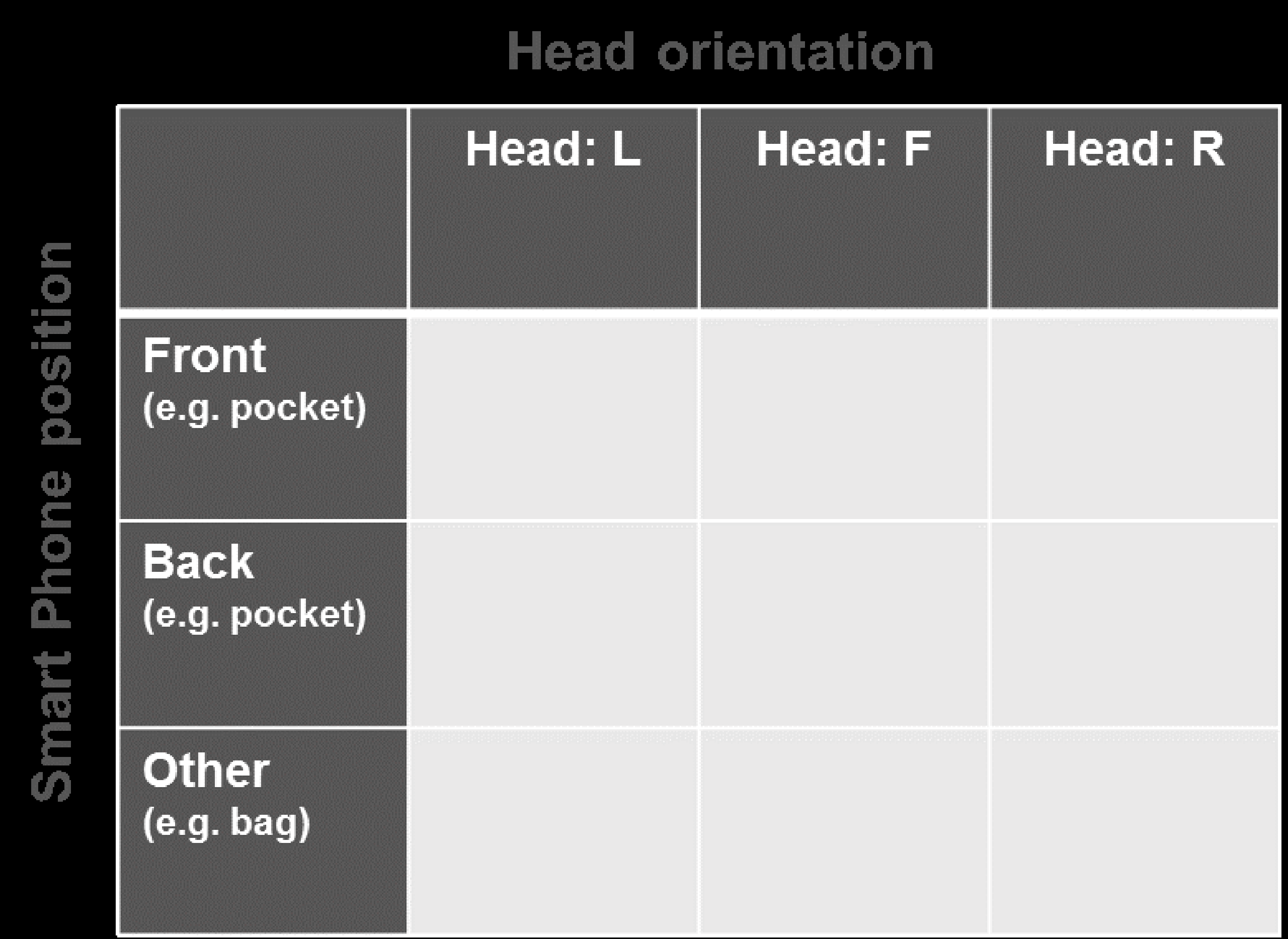
Signia hearing instruments provide wireless streaming without compromising signal processing performance in all three form factors: receiver in-the-canal (RIC), behind-the-ear (BTE), and custom. The perceived strength and quality of the Bluetooth streamed signal will be impacted by the patient’s hearing loss but can be enhanced further using the Audio Streaming adjustments in the Connexx fitting software. From this screen, the HCP can adjust the overall gain using one handle or multiple handles representing multiple frequency bands. The gain represented by the red and blue bars below is added to or subtracted from the streamed signal only and is applied to any program the patient is using while streaming.
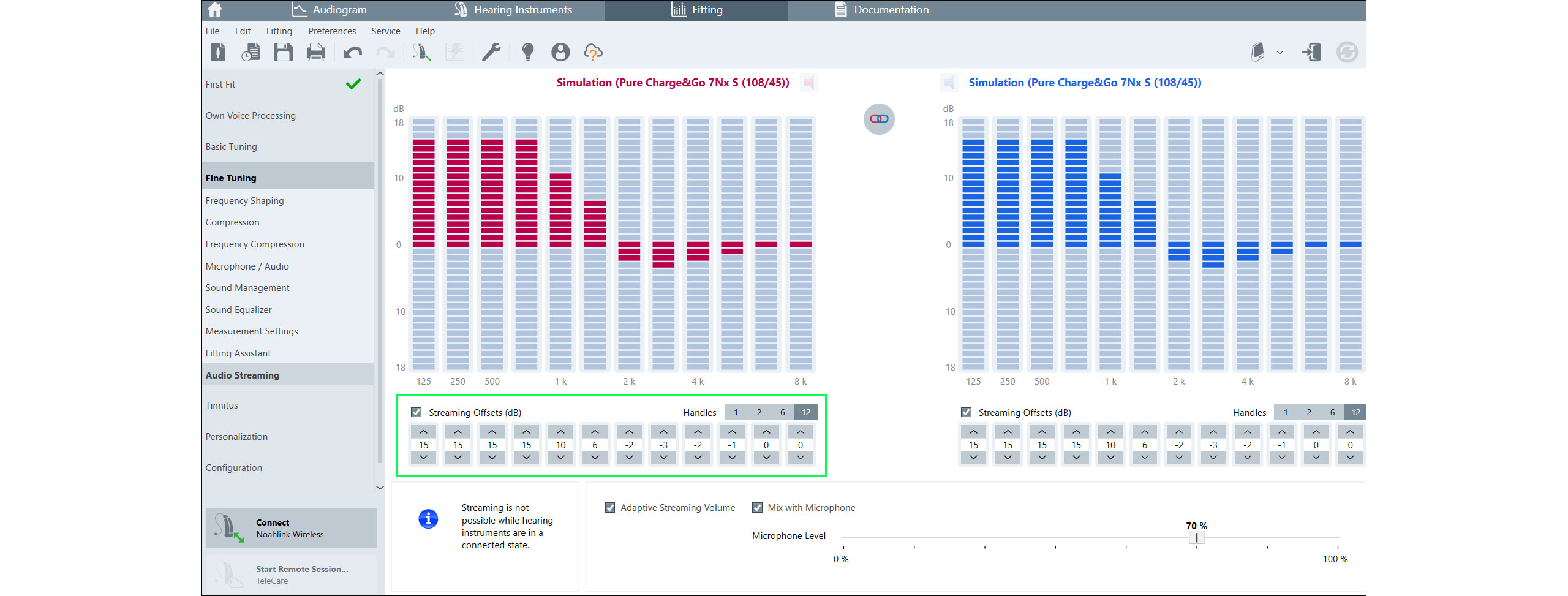
The patient has the option to stream with the hearing aid microphones activated or deactivated. Default is Mix with Microphone. Deselect Mix with Microphone to deactivate the hearing aid microphone.
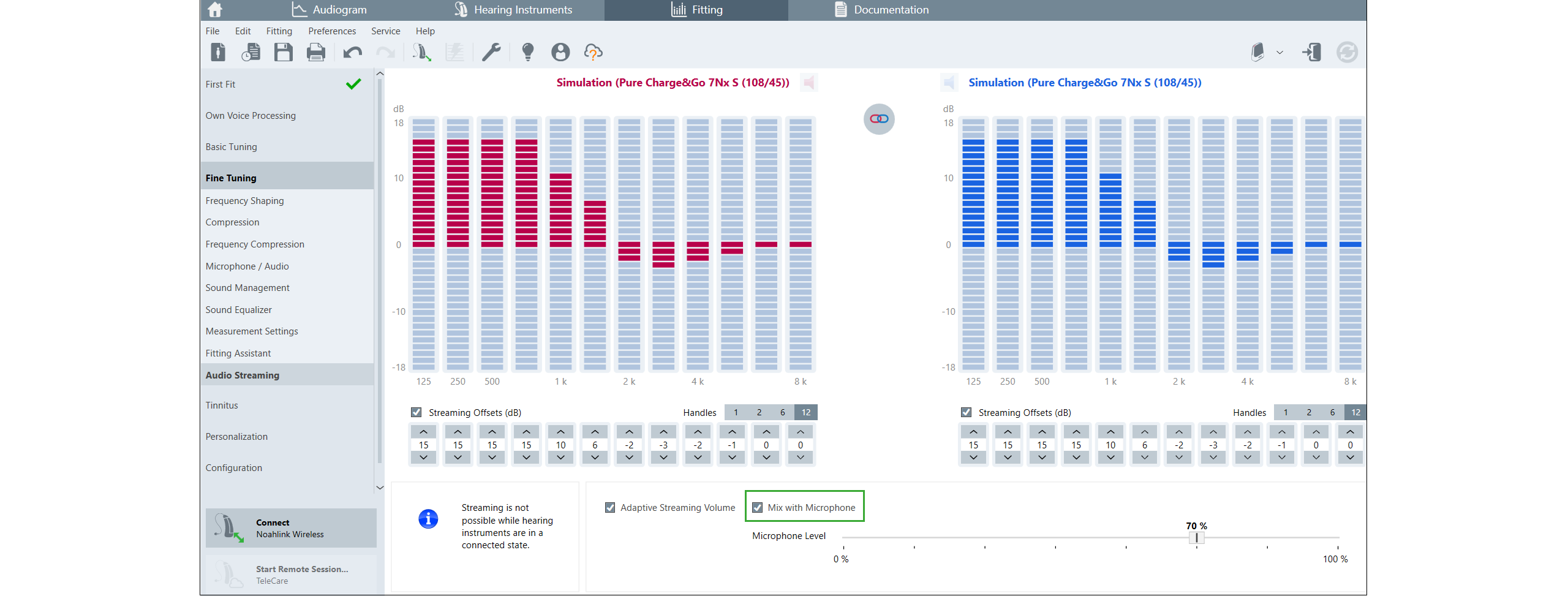
If Mix with Microphone remains selected, the HCP has the option to change the level of the hearing aid microphone relative to the streamed signal in the fitting software. The default is set to 70%. To increase the microphone level, move the slider to the right and to decrease the microphone level, move the slider to the left.
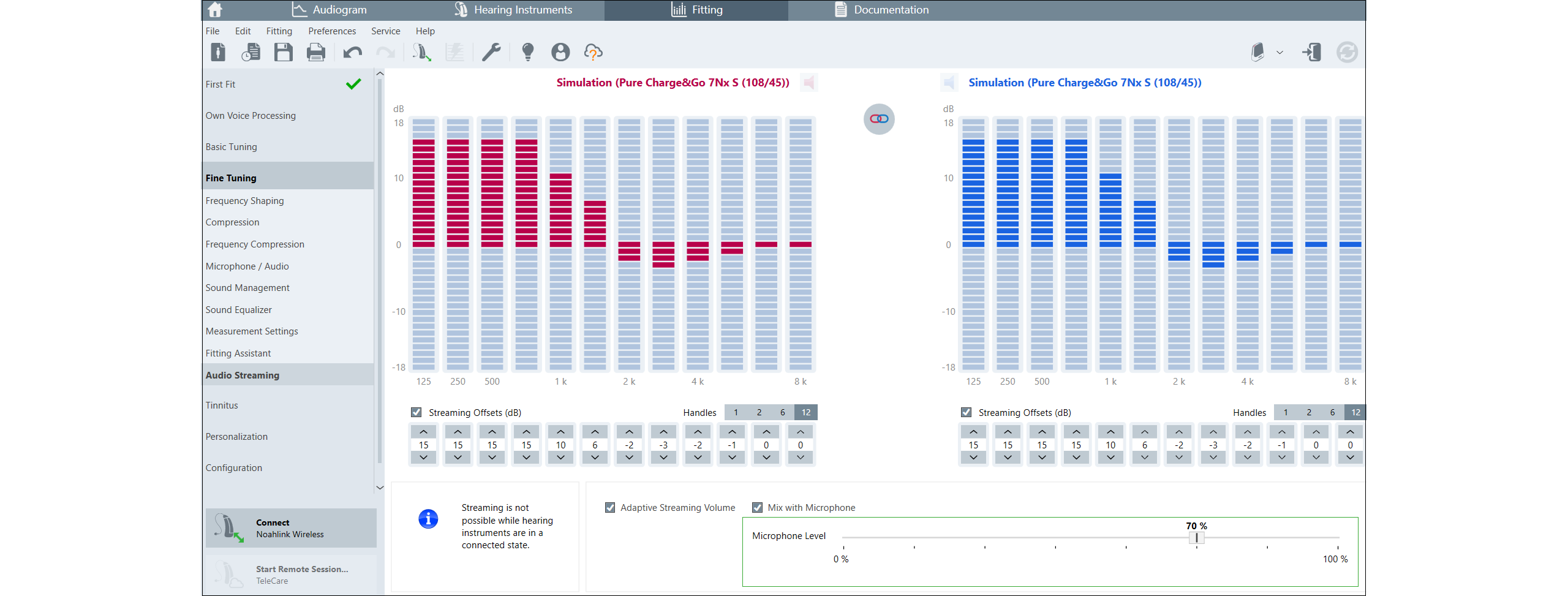
Finally, Adaptive Streaming Volume is a feature that automatically increases or decreases the volume of the streamed signal as background noise becomes louder or softer. Adaptive Streaming Volume defaults on.
Today’s hearing aid fitting and counseling session often extends beyond the traditional hearing aid fitting & counseling protocol. If the patient is seeking to improve communication and/or enhance acoustical experiences by wirelessly connecting to other devices, e.g. phone, tablet, television, it makes clinical sense to evaluate the application with the help of the HCP. First, using the patient’s phone, sound quality and speech intelligibility of a streamed signal should be evaluated and adjusted accordingly. Then placement of the phone relative to the hearing aids should be checked to ensure realistic expectations in real-world scenarios. Exploring the benefits of Bluetooth technology and counseling regarding realistic expectations should be routinely provided prior to leaving the HCP’s office. It is strongly recommended to conduct this assessment for all manufacturer’s Bluetooth products both inside the HCP’s office and outdoors to accurately evaluate real-world use scenarios and ensure patient satisfaction with their Bluetooth streaming experience.
Froehlich M (2019). Comparison of streamed audio signal quality: what matters in the real world.

Dr. Catherine Jons is a Clinical Education Specialist with Sivantos, Inc. She is responsible for training customers and staff on new developments in the areas of technology, products, and software. Catherine received her doctorate in Audiology from Central Michigan University, graduate degree from the University of Wisconsin, and undergraduate degree from the University of Minnesota. Catherine previously worked as a clinical audiologist at the University of Minnesota Medical Center, Walter Reed Army Medical Center, and Johns Hopkins Hospital where her efforts were concentrated in the area of amplification.

Dr. Carol Meyers is a Clinical Education Manager for Sivantos, Inc. She is responsible for the support and ongoing training of the Sivantos Educational Specialists. In this role, she trains staff and hearing care professionals in the U.S. on the company’s products, technology, software, services, and audiology-related topics at industry events, face-to-face meetings, in publications, and through virtual courses. Prior to joining Sivantos (then Siemens Hearing Instruments) in 2007, Dr. Meyers dedicated more than 25 years to clinical practice, during which she attained a comprehensive understanding of diagnostics, hearing aid technology, and how to address the communication needs of individuals. Dr. Meyers holds a doctorate degree in Audiology from Arizona School of Health Sciences and graduate and undergraduate degrees from the University of Nebraska.